Lucien Baroux was a French actor. He began his career working in the theatre, moving on to a long career in films from the 1930s.

Behind the Facade is a 1939 French drama film directed by Georges Lacombe and Yves Mirande and starring Lucien Baroux, Jules Berry and André Lefaur. The film's sets were designed by the art director Lucien Aguettand. It was shot at the Epinay Studios in Paris.
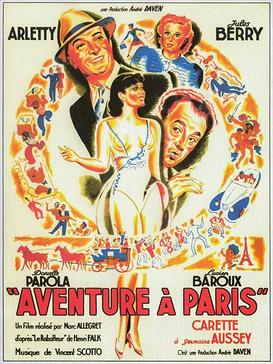
Adventure in Paris is a 1936 French comedy film directed by Marc Allégret and starring Jules Berry, Lucien Baroux and Danièle Parola. It was shot at the Billancourt Studios in Paris and on location around the city. The film's sets were designed by the art director Eugène Lourié.

The Bureaucrats is a 1936 French comedy film directed by Yves Mirande and starring Lucien Baroux, Pierre Larquey and Gabriel Signoret. It was remade as 1959 film of the same title.

Brilliant Waltz is a 1949 French musical crime film directed by Jean Boyer and starring Mártha Eggerth, Jan Kiepura and Lucien Baroux. It was shot at the Boulogne Studios in Paris. The film's sets were designed by the art director Lucien Aguettand.
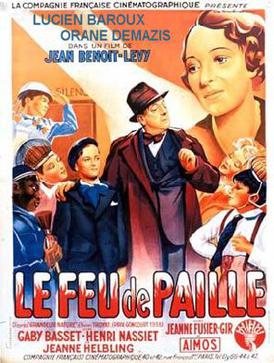
Fire in the Straw is a 1939 French drama film directed by Jean Benoît-Lévy and starring Lucien Baroux, Orane Demazis and Gaby Basset. The film's sets were designed by the art director Robert-Jules Garnier.

Prince Charming is a 1942 French comedy film directed by Jean Boyer and starring Lucien Baroux, Renée Faure and Jimmy Gaillard. It was shot at the Saint-Maurice Studios in Paris which was then under German Occupation. The film's sets were designed by the art director Jacques Colombier.

Montmartre is a 1941 French romantic comedy film directed by Georges Lacombe and starring Édith Piaf, Jean-Louis Barrault and Roger Duchesne.

Nine Boys, One Heart is a 1948 French musical film directed by Georges Friedland and starring Édith Piaf, Lucien Baroux and Marcel Vallée.
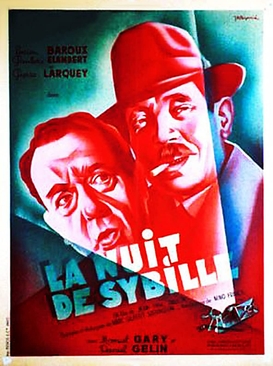
Sybille's Night is a 1947 French comedy film directed by Jean-Paul Paulin and starring Lucien Baroux, Paulette Élambert and Daniel Gélin. The film's sets were designed by the art director René Moulaert.

Charley's Aunt is a 1936 French comedy film directed by Pierre Colombier and starring Lucien Baroux, Olly von Flint and Monique Rolland. It is based on the 1892 play Charley's Aunt by Brandon Thomas. The film's sets were designed by the art director Jacques Colombier.

The Mascot is a 1935 French musical comedy film directed by Léon Mathot and starring Lucien Baroux, Germaine Roger and Thérèse Dorny. It is based on the 1880 Opéra comique of the same title. It was shot at the Billancourt Studios in Paris. The film's sets were designed by the art director Pierre Schild, while the costumes were created by Georges Annenkov.

Moulin Rouge is a 1941 French musical comedy film directed by André Hugon and Yves Mirande and starring Lucien Baroux, René Dary and Annie France. The film's sets were designed by the art directors Lucien Jaquelux and Hugues Laurent.

Monsieur Breloque Has Disappeared is a 1938 French comedy film directed by Robert Péguy and starring Lucien Baroux, Junie Astor and Suzy Pierson. It is an adaptation of the 1923 stage farce Dicky by Paul Armont, Marcel Gerbidon and Jean Manoussi. The film's sets were designed by the art director Émile Duquesne.
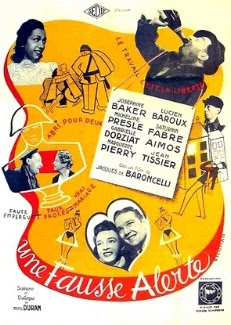
False Alarm is a 1940 romantic comedy drama film directed by Jacques de Baroncelli and starring Lucien Baroux, Micheline Presle, Josephine Baker and Saturnin Fabre The film's sets were designed by the art director Émile Duquesne and Eugène Lourié. It was filmed during the Phony War before the German Invasion. Delays to its release meant it was not given a full French premiere until 1945. It is also known as The French Way the alternative title it was later released under in the United States in 1952, with advertising heavily featuring American-born star Baker.
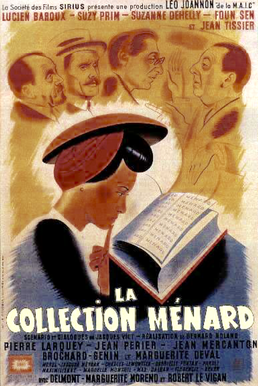
The Ménard Collection is a 1944 French comedy film directed by Bernard Roland and starring Lucien Baroux, Suzy Prim and Suzanne Dehelly. It was shot at the François 1er Studios in Paris. The film's sets were designed by the art director Robert Dumesnil.

Don't Shout It from the Rooftops is a 1943 French comedy drama film directed by Jacques Daniel-Norman and starring Fernandel, Robert Le Vigan and Meg Lemonnier. It was shot at the Marseille Studios in the Unoccupied Zone of France. The film's sets were designed by the art director Robert Giordani.

Three Days of Fun in Paris is a 1954 French comedy film directed by Émile Couzinet and starring Lucien Baroux, Armand Bernard and Pierre Larquey. It was based on a play by Eugène Labiche. It was shot at the Bordeaux Studios and on location around Paris. The film's sets were designed by the art director René Renneteau.
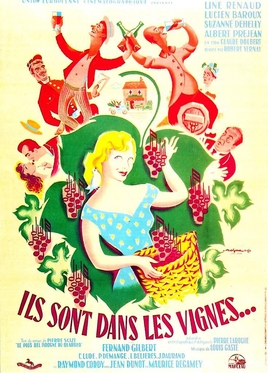
Love in the Vineyard is a 1952 French comedy film directed by Robert Vernay and starring Line Renaud, Lucien Baroux and Suzanne Dehelly. It was shot on location in the Côte-d'Or particularly around Beaune.

The Woman I Loved Most is a 1942 French drama film directed by Robert Vernay and starring Arletty, Mireille Balin and Lucien Baroux. It was shot at the Cité Elgé Studios in Occupied Paris. The film's sets were designed by the art director René Renoux.



















